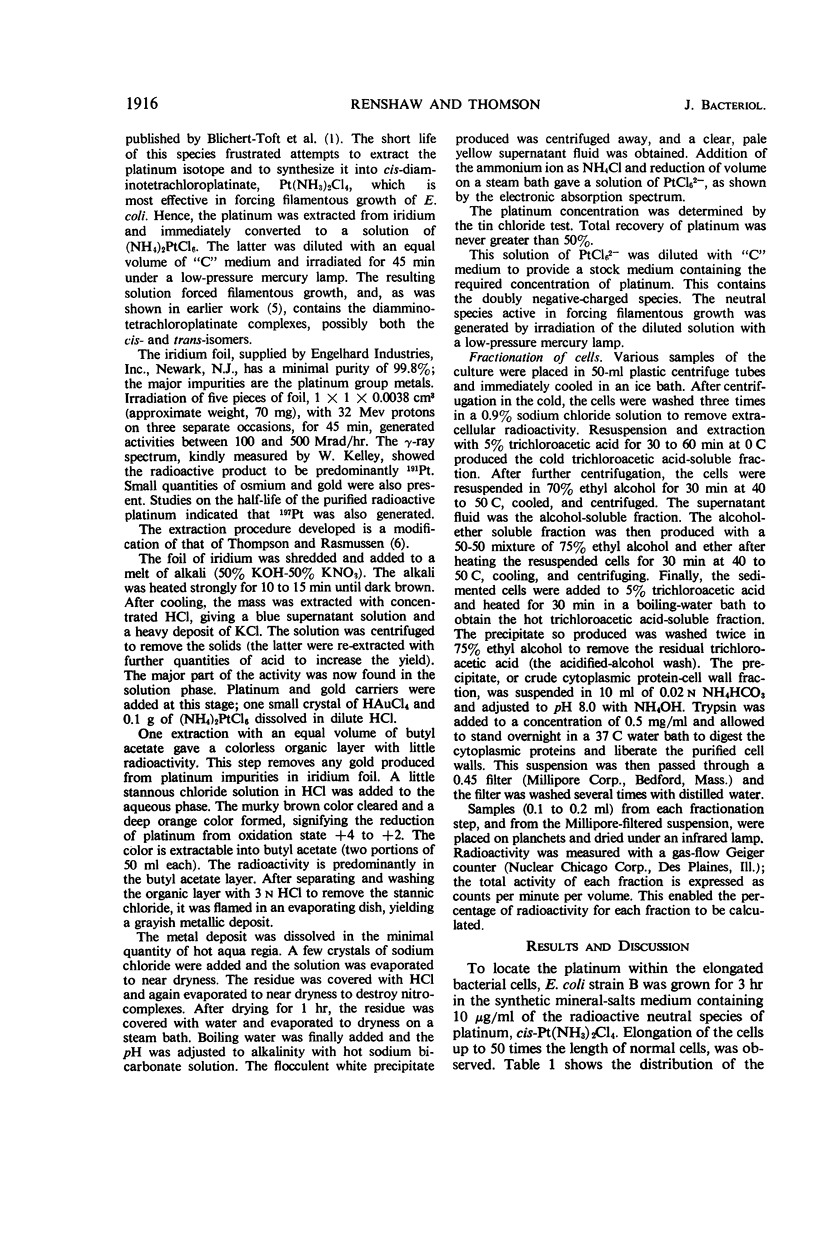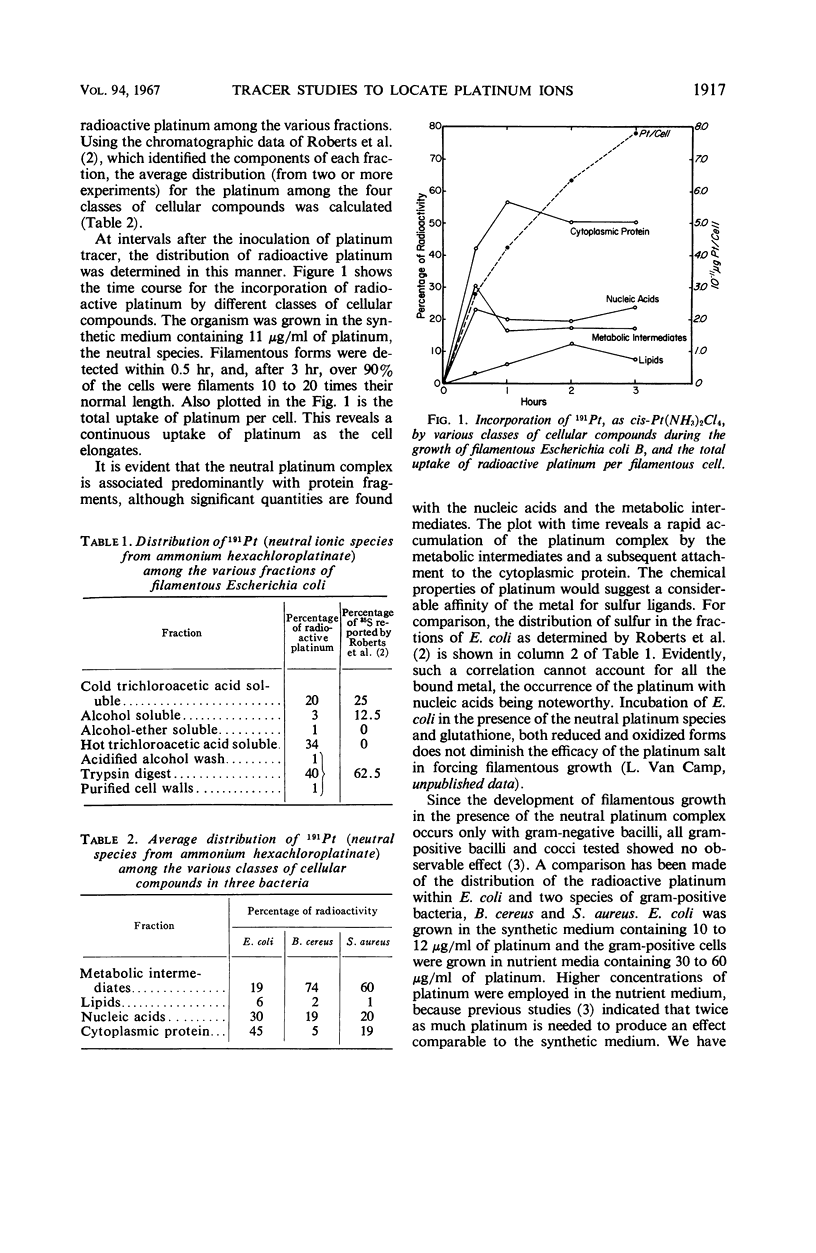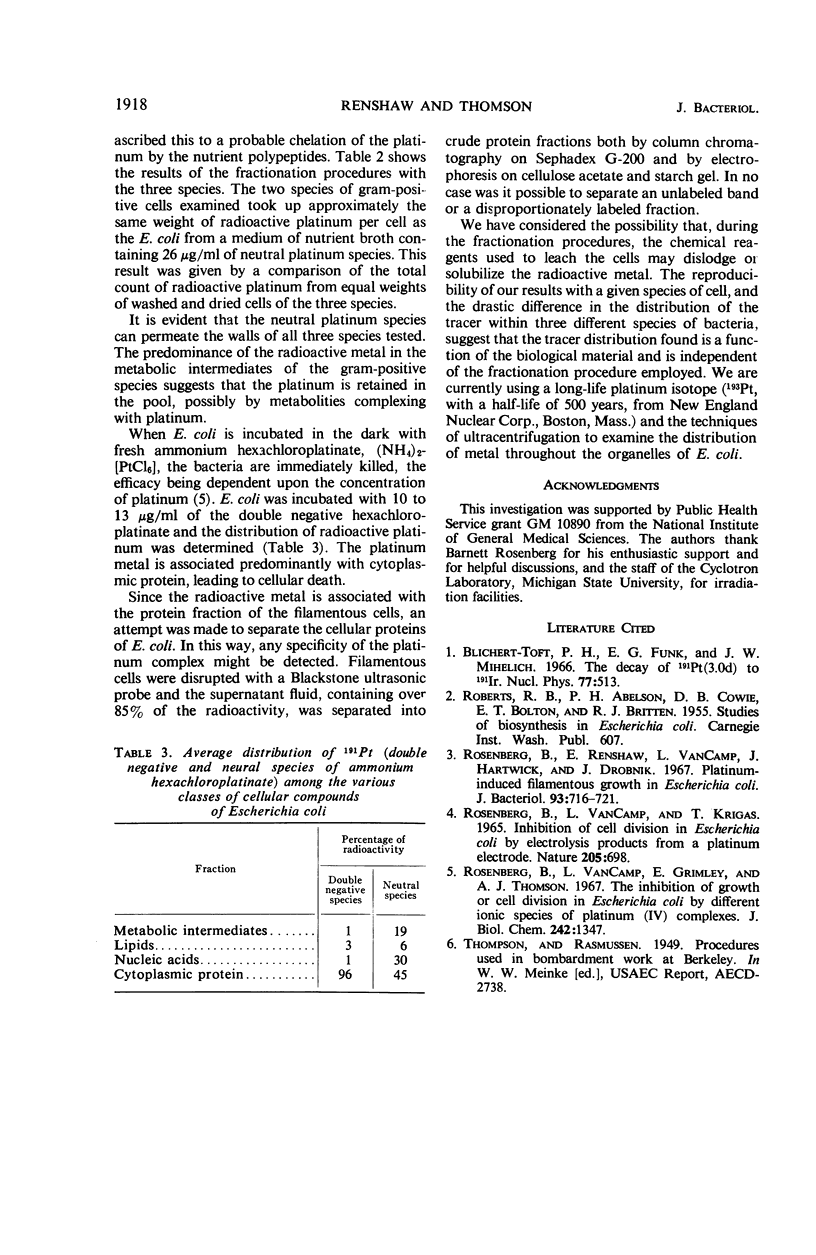Abstract
The distribution of platinum ions within Escherichia coli after the induction of filaments with cis-Pt(NH3)2Cl4, and after growth inhibition by PtCl62−, has been determined with radioactive metal compounds (191Pt, with a half-life of approximately 3 days) by the simple chemical procedure of Roberts et al. In the filamentous cells, the platinum metal is associated with metabolic intermediates, nucleic acids, and cytoplasmic proteins; whereas, in inhibited cells, the platinum is combined only with the cytoplasmic protein. Similar experiments with gram-positive cells of Bacillus cereus and Staphyloccus aureus, which show no filamentous growth in the presence of cis-Pt(NH3)2Cl4, reveal that the metal complex does penetrate the cell wall and subsequently becomes bound predominantly by metabolic intermediates.
Full text
PDF



Selected References
These references are in PubMed. This may not be the complete list of references from this article.
- ROSENBERG B., VANCAMP L., KRIGAS T. INHIBITION OF CELL DIVISION IN ESCHERICHIA COLI BY ELECTROLYSIS PRODUCTS FROM A PLATINUM ELECTRODE. Nature. 1965 Feb 13;205:698–699. doi: 10.1038/205698a0. [DOI] [PubMed] [Google Scholar]
- Rosenberg B., Renshaw E., Vancamp L., Hartwick J., Drobnik J. Platinum-induced filamentous growth in Escherichia coli. J Bacteriol. 1967 Feb;93(2):716–721. doi: 10.1128/jb.93.2.716-721.1967. [DOI] [PMC free article] [PubMed] [Google Scholar]
- Rosenberg B., Van Camp L., Grimley E. B., Thomson A. J. The inhibition of growth or cell division in Escherichia coli by different ionic species of platinum(IV) complexes. J Biol Chem. 1967 Mar 25;242(6):1347–1352. [PubMed] [Google Scholar]


